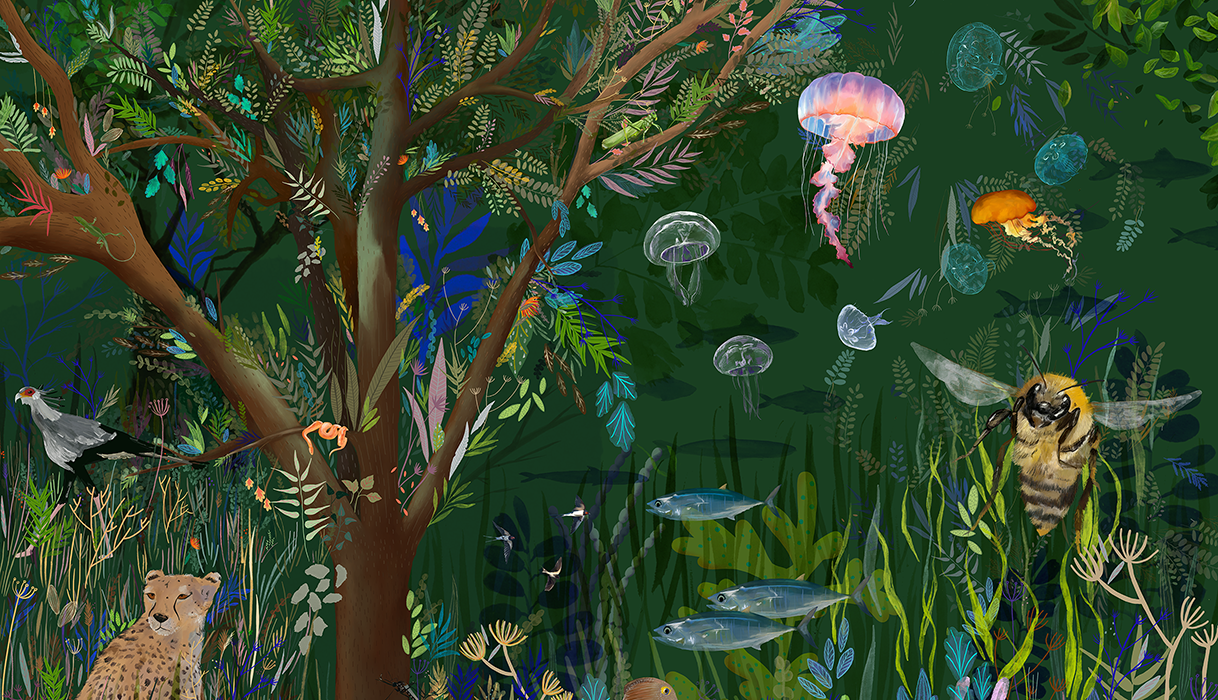"The human drive towards meaning-making leads us to both consciously and unconsciously build our world from social conditioning, scientific rationality, artistic traditions, and our own struggle for survival," says JCAF’s executive director Clive Kellner. Ecospheres marks the launch of JCAF's new three-year research theme, Worldmaking. With this, the ways we collectively make the spaces we inhabit through symbolic practices come into focus with a trilogy of exhibitions, accompanying talks, and publications.

Ecospheres addresses issues relating to ecology, the environment, climate, and the natural world through the lens of 'making-with' (living with). "The process of making-with suggests that nothing makes itself," says Kellner. "When we make-with, we are inextricably bound to the Earth. There is a sense that we – as humanity – are responsible for the Earth and all living creatures as a form of stewardship."
Further, the exhibition unpacks the notion of the Symbioscene, a term coined by Australian academic Glenn Albrecht in 2011 to speak to a new era in human history characterised by harmonious interactions between humans and all living beings. This utopic idea exists in stark contrast with our current epoch, sometimes referred to as the Anthropocene, where our devastating impact on the environment looms large on the horizon.
Broken into three sections, the elements of Water, Air, and Earth are the focus of the exhibition's Atmosphere Rooms; conceptual spaces that foreground and amplify different artists and their specific departure points. "Water is engaged as a mediator connecting the natural world to people, places, and identity," the exhibition text explains. "The properties of Air as both a political and poetic construct are examined through the bonds of kinship, migration, diaspora, and the lingering effects of atmospheric violence. The section on Earth embodies ideas of indigenous knowledge and sustainability, exploring how local indigenous knowledge informs the creation of ideas that shape art, culture, and food."
From installations of hydroponic plants to oceanic-inspired knitted textiles, botanic photography, sound, and meditative paintings of migratory birds, Ecospheres brings many mediums under its banner. South African artists Bronwyn Katz, Zayaan Khan, Coila-Leah Enderstein, Zizipho Poswa, Jonah Sack, and Russell Scott contribute to the exhibition, alongside practitioners from further afield. These include Isabella Celis from Columbia, Rithika Merchant from India, Ernesto Neto from Brazil, and Michael Tsegaye from Ethiopia.
Within the gallery's newly built Reading Room designed by Wolff Architects, visitors can engage with the Ecospheres Reader. Also look out for a special project presented by South African illustrator Rebecca Potteron, whose whimsical work The Other Side of Dreaming features on the exhibition's poster.
Ecopheres opens to the public on Fri, May 31 at JCAF's gallery space in Forest Town. Viewings are by appointment only; make a booking here.



